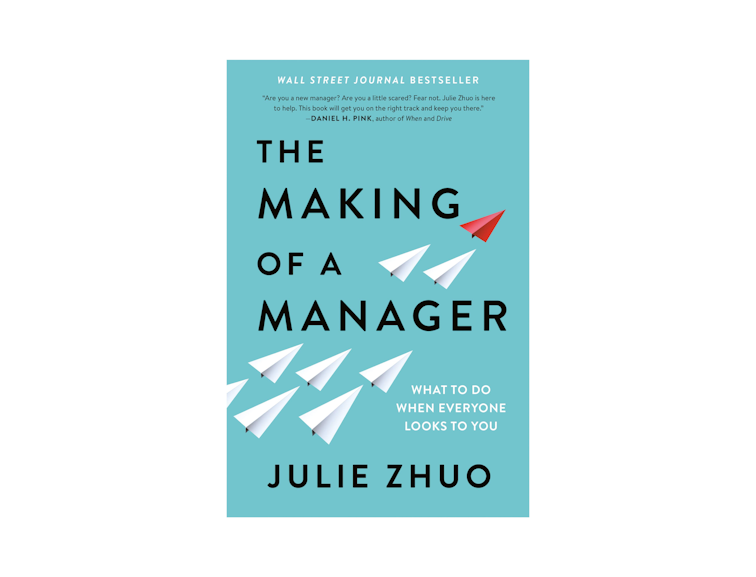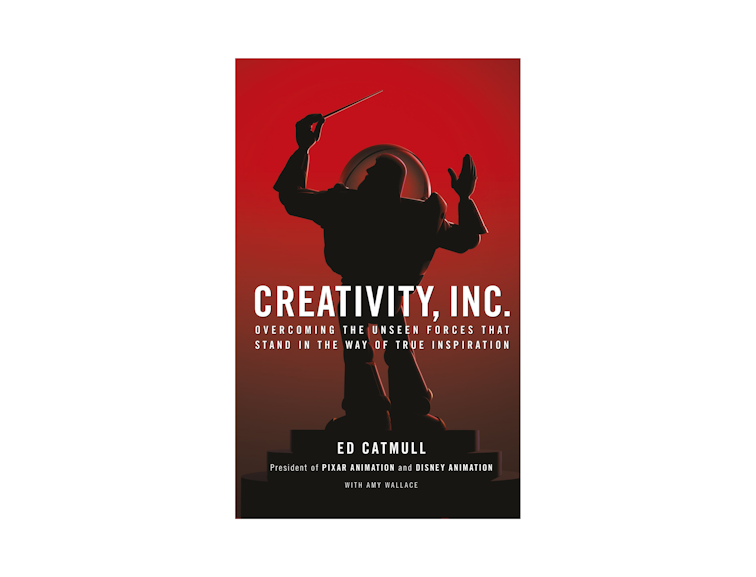UX leadership is about driving UX strategy, advocating user needs, and aligning design decisions with business goals. A great UX leader knows how to build trust with stakeholders, align the team to create compelling user experiences, and build better products that deliver real impact.
To better understand what defines UX leadership, and the essential qualities and skills needed to become a UX leader, we spoke to UX design leaders at Deel, Webex, Coursera, Springer Nature Group, and OneTrust.
So whether you're refining your leadership style or stepping into a UX leadership role, read on for a guidebook on leading with confidence and clarity.
What makes a great UX leader?
Ultimately, UX leadership is about bringing people together to achieve a shared vision.
UX leaders are more than experienced UX practitioners or managers who focus on day-to-day execution. A UX leader shapes the vision, mentors team members, and defines outcomes and direction while empowering their teams to deliver the best results.
A great UX leader balances creativity with practicality, ensuring that UX teams deliver both innovation and measurable impact. Their success isn’t just measured by product outcomes, but by the growth of their teams and the influence of UX research and design thinking across the organization.
The core tenets of a great UX leader include:
- Strong leadership skills
- Clear communication with stakeholders
- A deep understanding of user needs
Self-awareness is one of the most important things if you are a UX leader or you are planning to become one. Knowing yourself, improving yourself, and managing the appropriate balance in your own life is crucial to being a good leader.

Thais Souza
Lead Product Designer at Deel
Share
Jackie Dane, Sr. Principal UX Designer at OneTrust, added “Becoming a great leader also requires continuous learning and growth. Find others in the industry who are leading successful teams and follow them. Stay in touch with your mentors throughout your career, and keep in mind, your mentors don't necessarily work in UX.”
7 Essential UX leadership skills
Effective leaders are curious, vulnerable, bold, and humble. We ask questions, even when it's hard or scary. We show up with vulnerability and engage in tough conversations and feedback discussions to help others grow into their own leadership. We are bold in vision but humble enough to stand corrected and change course when needed.

Cheryl Couris
Senior Director of Design at Webex
Share
The skills required to become a great UX leader vary from technical skills, such as solid knowledge of UX design principles and processes and how to create a UX vision and strategy, to soft skills, such as empathy, being open to feedback, and effective communication. Let's take a look at the most important skills and how you can best develop them.
1. Lead with empathy
Empathy is the foundation of effective UX leadership. A UX leader must understand both user needs and the challenges their UX team faces. Being empathetic means actively listening, recognizing different perspectives, and making thoughtful decisions that benefit both the team and the end users.
When UX teams feel understood and valued, they collaborate better, trust their leaders, and stay motivated. Likewise, stakeholders and product teams are more likely to support UX initiatives when they see that UX leaders understand their goals and constraints.
How to do it:
- Listen before leading: Pay attention to what your team and users are saying. Conduct user research, have regular one-on-ones, and encourage open discussions.
- Ask open-ended questions: Instead of assuming what people need, ask questions like “What’s challenging about this project?” or “How can I support you better?” to get deeper insights
- Encourage honest feedback: Create a space where your team feels comfortable sharing concerns and ideas. Set up regular feedback loops within the design team.
- Be flexible with solutions: Not every problem has a straightforward answer. Adapt your approach based on real challenges rather than sticking to rigid processes.
- Stay connected to user challenges: Don’t just rely on secondhand reports. Get involved in usability testing, analyze UX research, and see firsthand how people interact with your product.
Being a leader is a continuous learning process and understanding where people are coming from helps facilitate a more human environment. After all, what’s more important to human communication than understanding others?

Thais Souza
Lead Product Designer at Deel
Share
Jackie also points out, "A UX leader should be a coach, guide, and listener. It’s very similar to UX research. We need to listen carefully and observe to understand what our team members need to do their best. Then we help them work together and lean on each other to succeed."
2. Create a UX vision and strategy
A well-defined UX strategy gives the team a clear direction to follow and keeps everyone focused on solving the right problems for the users and the business. It shows why certain decisions have been made, what the team will be working on, and how their work will impact the company. A UX strategy is a powerful tool for motivating and inspiring your team to achieve better results.
I still see many product and design teams making decisions on impulse as they're developing the product, leading to a lack of purpose and results. It's important to translate the vision into a clear UX strategy to decide what actions to take and what not to do.

Thais Souza
Lead Product Designer at Deel
Share
3. Build and empower UX teams
Hiring skilled UX professionals is important, but building a team that is motivated, confident, and aligned with the UX vision is what drives real impact.
As Thais points out, “It's vital that you not only recruit but also develop and reward the team to carry out the strategy.” This means investing in your team’s growth, setting clear expectations, and recognizing their contributions.
How to do it:
- Get to know your team beyond work: Take time to understand their motivations, career goals, and challenges. Stronger personal connections lead to better team dynamics.
- Set clear goals and expectations: Break down big UX objectives into smaller milestones and UX OKrs. This keeps the team aligned and makes progress measurable.
- Encourage ownership and autonomy: Give team members the freedom to take initiative and make design decisions. Trust fuels confidence.
- Recognize and reward contributions: Acknowledge wins, both big and small. This builds motivation and reinforces a culture of excellence.
- Provide opportunities for growth: Support professional development through mentoring, training, and learning experiences that help UX professionals expand their skills
4. Create a continuous learning culture
Just as continuous product research and discovery is vital for user-centered design, Thai notes that “You should always encourage innovation and learning to sustain your team and grow new leaders.”
There are different ways to nurture curiosity and continuous learning in your team members, such as providing them with opportunities to attend workshops and conferences or sharing your own continuous learning journey to inspire and motivate them to do so as well.
Also, try to encourage team members to set their own learning goals and share them with the rest of the team—this will show you what they want to learn and make them accountable for reaching their goals.
5. Promote a culture of feedback
The general sense of what I think about leading and managing a UX team is like having a dialogue. I need to understand how team members are working together and individually to know their strengths and weaknesses. Feedback is essential for improving and helps build that awareness.

Mark Wu
UX Leadership at Springer Nature Group
Share
Communication is the backbone of effective leadership—but only when it's an ongoing process. That's why you need to give feedback regularly to your team and be open to receiving feedback about your performance. Mark Wu, UX Leadership at Springer Nature Group, shares his tips for creating a feedback culture:
- Create a safe environment: Create an environment where people feel safe to give and receive feedback. If there’s an issue, people should be able to speak up and share their points of view.
- Use different forms of feedback: You can use different types of feedback, including real-time feedback; 1:1 meetings where the UX manager and their direct report can share opinions, provide updates, or resolve issues; or 360 surveys to see how everyone in the team can do better in their role or improve their skills.
- Express vulnerability: People won’t be sure about what they can say if you sit there without revealing what you genuinely think or feel. Acknowledging your own fears, challenges, and doubts, or admitting when you're wrong, will create space for people to give feedback and be open about what they think.
- Use frameworks to help you remain objective: Frameworks such as the Four-Step Feedback Model or the OSCAR feedback model can help you provide better feedback and be honest but with care.
“If there’s a major problem, you want to make it clear. And if things are going well, you want to explain that. But it’s about not making things sound worse or better than they are,” says Mark. “I think that’s a skill that can be developed and frameworks can help you do that.”
You should also encourage team members to give feedback to each other. It's a great way to improve performance and ensure team alignment and communication.
Samuel Moreau, VP of Design & Research at Coursera, says, "We do a lot of design reviews, standups, share-outs. We often do a thing called 'I need help.' Someone would say, 'I’m working on this thing, I need help,' and then everyone would give them feedback and help them move forward. It’s a 15-minute session where people get design feedback from other designers working in another area."
The benefits? "It makes everyone more aware of the work going on. It makes the work better because you have a lot of eyes on it quickly. Also, it creates a more collaborative environment because you’re not afraid of showing your work," Samuel explains.
6. Delegate effectively
Delegation is a powerful UX leadership skill. It allows you to free up time and focus on high-level tasks such as strategic thinking and coaching and mentoring the UX team. Plus, it’s a great tool to empower UX professionals and help them build new skills by giving them greater autonomy.
Delegating is hard, right? A defined process and clear communication are key, so everyone can expect what the task or assignment looks like.

Cheryl Couris
Senior Director of Design at Webex
Share
Here’s how to delegate effectively:
- Define the task and be clear about the outcomes you want to achieve
- Choose the right person or team to delegate the task to
- Assess your team members’ experience, workload, and development needs to provide the proper support
- Explain the reason for delegating the task to that particular individual or team
- Set performance standards and agree on realistic deadlines
- Don't forget to provide feedback and give people the recognition they deserve
Cheryl Couris, Director of Design at Webex, says: "We have a Kanban board in Jira and usually kick off each two-week sprint with a planning session to discuss and assign projects and tasks.”
"Recently, I kicked off a major initiative to define the 12+ month vision for our product—this is something that takes a village and I could never do it alone. I gathered the resources and requirements in a FigJam file and huddled with designers across eight different scrum teams to assign who would do what," Cheryl continues. "I find having a name on each item is helpful. Knowing who is responsible for each piece of the puzzle promotes accountability and clarifies who will deliver what.”
7. Evangelize UX
As a UX leader, an important role you’ll play is evangelizing UX and acting as a champion for user-focused design with the rest of the organization. Here are a few tips for making your UX work visible and engaging to the rest of the product teams and business stakeholders.
“It takes togetherness to ship and build software, especially at scale. That's why I tend to be very inclusive with the other disciplines, such as product and engineering in the UX design process,” says Samuel. “My strategy is to bring people in. One of the first things I do is invite everyone to brainstorm and make everything about sketching.”
"My biggest tip is to find a partner in your organization that you can collaborate with. Work together to do some low-key user-focused validation or iteration, gather the feedback or data, and do a read-out for visibility," says Cheryl. "Correlate your work to business outcomes and define how you will measure success. Then, follow up and repeat."
Not everyone can go into Figma and understand how to build beautiful designs and prototypes, but everyone can draw a line, a box, a circle. This way, the act of designing is open to everyone.

Samuel Moreau
VP of Design & Research at Coursera
Share
How to transition from UX designer to UX leader
Moving from a UX designer to a UX leadership role means shifting your mindset from execution to strategy. Instead of focusing solely on user experience design, prototyping, or UI design, you’ll need to lead teams, influence stakeholders, and drive UX strategy that aligns with business goals.
Many UX professionals struggle with this transition because leadership demands soft skills like communication, decision-making, and mentorship—skills that aren’t always taught in traditional UX design roles. Here’s how to successfully make the shift.
- Expand your perspective beyond design: Leadership requires thinking beyond interfaces and considering business goals, UX strategy, and cross-functional collaboration. Work closely with stakeholders, Product teams, and Engineering to understand how UX decisions impact the bigger picture.
- Strengthen your leadership and communication skills: A UX leader needs to articulate ideas clearly, get buy-in from stakeholders, and ensure UX teams stay aligned. Practice presenting UX research, advocating for user needs, and leading design discussions with confidence.
- Start mentoring and supporting your team: Leadership isn’t just about managing projects; it’s about growing people. Help junior UX professionals build their skills, provide constructive feedback, and foster a culture of continuous learning.
- Develop decision-making and prioritization skills: As a UX lead, you’ll need to prioritize projects, manage resources, and balance user needs with business constraints. Get comfortable making tough calls and justifying design choices with data.
- Advocate for UX at a strategic level: Maze’s 2025 Future of User Research Report found that the more UX research is integrated, the greater its business impact; leadership means ensuring UX has a voice in key decisions. Work on building relationships with executives, demonstrating the impact of user experience design, and integrating UX into the company’s broader goals
I also find getting stakeholders bought in from the beginning is helpful—meet one-on-one to listen and be curious. Working to address an executive’s top few concerns is a great way to build shared investment in UX as a practice.

Cheryl Couris
Senior Director of Design at Webex
Share
Common challenges in UX leadership and how to overcome them
Stepping into a UX leadership role comes with new responsibilities—managing teams, influencing stakeholders, and balancing user needs with business goals. Here are some common obstacles UX leaders face and how to navigate them effectively:
- Gaining executive buy-in for UX: Many companies still see UX as an afterthought rather than a strategic function. To overcome this, tie UX strategy to measurable business metrics like revenue, conversion rates, or retention. Present user research and usability data to make a case for UX investments.
- Balancing business goals with user needs: Stakeholders often push for fast results, which can conflict with user-centered design principles. Stay proactive by involving UX early in decision-making and using data-driven insights to align product teams with UX teams.
- Managing and scaling UX teams: Leading a team requires more than design expertise—it takes team dynamics, mentoring, and structured processes. Set clear expectations, define a UX vision, and create a culture of open feedback and continuous learning.
- Keeping up with evolving UX trends: The UX industry changes rapidly, and leaders must stay ahead. Engage with podcasts, LinkedIn discussions, and UX conferences. Encourage your team to explore new skills, tools, and methodologies.
- Handling cross-functional collaboration: UX leaders work closely with Product, Engineering, and Marketing, which can lead to misalignment. Improve collaboration by clearly communicating UX priorities, fostering open discussions, and ensuring that design leadership has a seat at the table.
Recommended readings for UX leaders
1. ‘The Making of a Manager’ by Julie Zhuo

“In this book, Julie provides honest insights into what it means to be a manager and how to best transition into a managerial role. Definitely worth a read if you're a manager or looking to become one.” — Thais Souza, Lead Product Designer at Deel
Like most first-time managers, Julie Zhuo, former design VP at Facebook, wasn't given any formal training and had no resources to turn to for help. It took her years to find her way, but now she's offering you the shortcut to success. Whether you're new to the job or a veteran leader, The Making of a Manager is the handbook you need to be the kind of manager you've always wanted.
2. ‘Radical Candor’ by Kim Scott

“I read books on UX and books on leadership. Right now, I’m reading ‘Radical Candor’ by Kim Scott and loving it." — Jackie Dane, Sr. Principal UX Designer at OneTrust
Radical Candor offers valuable tools that any team leader or manager can use to build better, stronger relationships with their employees. The book reveals an insightful approach to management that creates a working environment where individuals can reach their full potential and produce better results.
3. ‘Herding Tigers’ by Todd Henry

“My favorite creative leadership book thus far is 'Herding Tigers' by Todd Henry. I also recommend Julie Zhuo’s 'The Making of a Manager' and 'Radical Candor' by Kim Scott. You should read these even if you never want to be a people manager—leadership is an attitude, not a title." — Cheryl Couris, Senior Director of Design at Webex
Doing the work and leading the work are very different things. In Herding Tigers, Todd Henry draws from interviews with brilliant leaders and his experience consulting in creative organizations to provide an indispensable handbook of practical advice for new managers of creatives.
4. ‘Essentialism’ by Greg McKeown

“In terms of being sustainable, you need to define what is essential to what you need to do, what can shift the needle, and what can make the highest impact. 'Essentialism' has been key for me to perpetuate this concept. It’s actually a book that I buy for all new starters who join our team." — Mark Wu, UX Leadership at Springer Nature Group
Essentialism is a must-read for any leader, manager, or individual who wants to learn how to do less but better in every area of their life. It's not just a time management strategy, but a systematic discipline for discerning what is essential, then eliminating everything that is not, so you can make the highest possible contribution to the things that really matter.
5. ‘Creativity, Inc.’ by Ed Catmull

“'Creativity, Inc.' tells the story of how to foster a culture of quality and accountability told with Pixar movies as a backdrop. I find it very inspiring as a business and leadership book, plus I’m a huge Pixar fan.” — Samuel Moreau, VP of Design & Research at Coursera
For nearly twenty years, Pixar has dominated the world of animation. Written by Pixar co-founder Ed Catmull, Creativity, Inc. reveals the ideals behind that success. One essential ingredient was the unique environment Catmull and his colleagues built at Pixar, based on leadership and management philosophies that protect the creative process and defy convention.
Becoming a UX leader: Key takeaways
There are many qualities and skills that UX leaders should aim to achieve, from empathy to team management to delegation. Like anything, these can be learned and developed with hard work and practice.
Check out our UX Management Collection: packed with tailored resources for all aspiring and current UX leaders who want to grow and improve their leadership skills.
Frequently asked questions about UX leadership
What skills should a UX leader have?
What skills should a UX leader have?
UX leaders should have a wide range of skills, including leading with empathy, building and managing high-performing UX teams, giving and receiving feedback, delegating effectively, and evangelizing UX with the rest of the organization and business stakeholders.
What are the roles of a UX leader?
What are the roles of a UX leader?
A UX leadership role involves managing the UX team and providing guidance and advice to team members to help them achieve their full potential. UX leaders are also responsible for driving the UX vision and strategy, showing the business value of UX design, and evangelizing UX within the organization.
What makes a good UX team leader?
What makes a good UX team leader?
Great UX leaders have a solid knowledge of UX laws and processes. They guide the team towards a shared vision but remain flexible and adapt to change. They know that great results come from UX professionals working effectively together. That's why they listen to team members, coach, and mentor them to help them grow in their careers.



